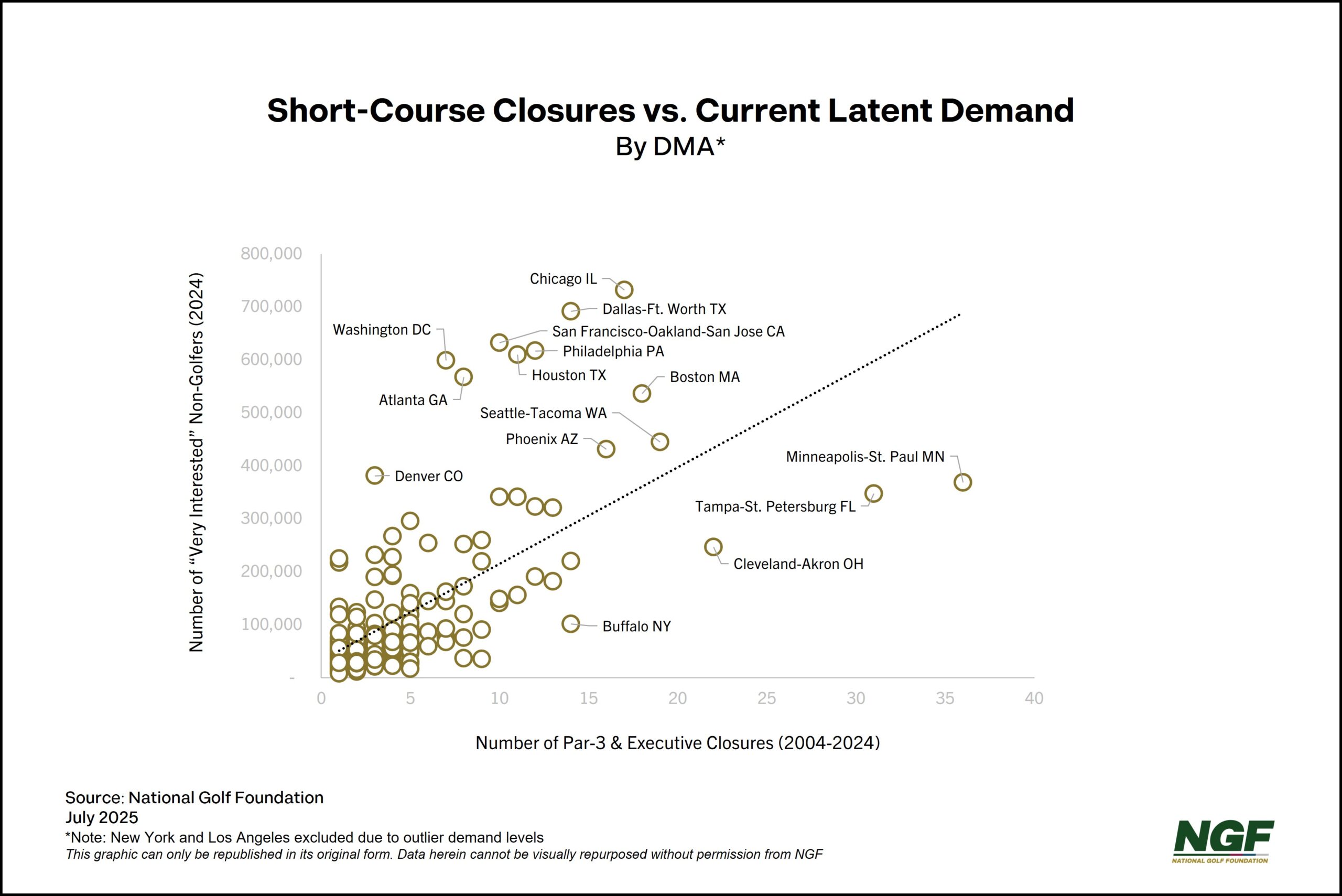If you’ve seen photos or videos of the new Cliffhangers course opening this week at Big Cedar Lodge in Missouri’s Ozarks, you’ll understand why its creators have not only dubbed it as the “most extraordinary Par 3 golf course in the world,” but are thinking otherworldly. With 18-holes draped across a rugged limestone cliffside with 400 feet of elevation change, waterfalls, rock outcroppings, and dramatic mountain views, the resort’s founder describes the new course like “golfing on the moon.”
Cliffhangers exemplifies a broader trend in short course development, joining other recent high-profile resort openings like Shorty’s at Bandon Dunes and The Chain at Streamsong. These popular concepts signal renewed interest in short-format golf and demonstrate the creative potential of the segment.
Yet this perceived shift toward engaging players with less time-consuming options conceals a disconnect in the market over the past two decades. While millions of dollars are being actively invested in extraordinary par-3 experiences, the more “local” short courses that could serve as everyday developmental pathways have closed at disproportionate rates, with most newcomers and prospects – the very people these facilities could serve – not even knowing they existed.
A deeper dive into our database is revealing. More than 800 Par-3 and executive courses closed between 2004 and 2024, representing 20% of course closures over that time. The result is 23% fewer Par-3 and 17% fewer executive courses – both steeper declines than what regulation-length courses experienced during the same period. This erosion left major metropolitan areas with dozens fewer transitional facilities where players could bridge the gap from ‘golfertainment’ to ‘green grass’ – including some cities in which interest in playing golf has considerable momentum among non-golfers.

Some will say we’re in the midst of a “short course movement.” Whether that’s true depends on how you define “movement.” Short courses have accounted for a significant share of new openings over the past five years – 41 courses, or 37% of openings – but three-fifths of them have been at higher-end private or resort destinations.
There’s no doubt these new concepts are revolutionizing how people experience golf, creating extraordinary moments that genuinely deepen passion for the game (and, to an extent, even convert newcomers into lifelong players). But they’re generally more geared toward the committed player and don’t directly improve the awareness or utilization of everyday options where most people live.
The solution isn’t necessarily more construction. Building new short courses rarely makes economic sense given land costs around major metro areas, but strategic conversions present one viable path forward. The 3’s model, backed by 8AM Golf and Justin Timberlake, illustrates this approach by transforming aging facilities into modern mixed-use short courses that integrate golf with entertainment amenities – complete with music, elevated F&B, and lighted play. Their next template location opens later this year in Charlotte.
Similar transformations are happening globally. Shortees Golf Club in Australia (formerly Terrey Hills Par 3) demonstrates the potential of this model, evolving to an 18-hole day and night pitch-and-putt course that fosters inclusivity through curated music, food and branding – contemporary touches that make golf feel fresh and exciting. Much like Butler Park Pitch & Putt in Austin, Texas.
Nearly 1,700 Par-3 and Executive courses currently operate in the U.S. – roughly one in every ten courses. But not all short courses serve the same purpose. Given the proliferation of off-course formats and the diversification of golf introductions, the developmental pathway is changing rapidly. A real opportunity just might lie in transitional facilities that extend beyond resort and private club settings.
Some operators could be well-served by examining the void left by short course closures in their markets. Many occupy an ideal position within the player pathway but could benefit from renewed focus and strategic positioning. The convergence of past short course decline, rising current demand, and widespread unawareness creates a clear market opportunity. The question is: which facilities will capitalize on this opening by repositioning as accessible bridges that blend contemporary energy and cultural appeal with meaningful progression toward the complete golf experience?



